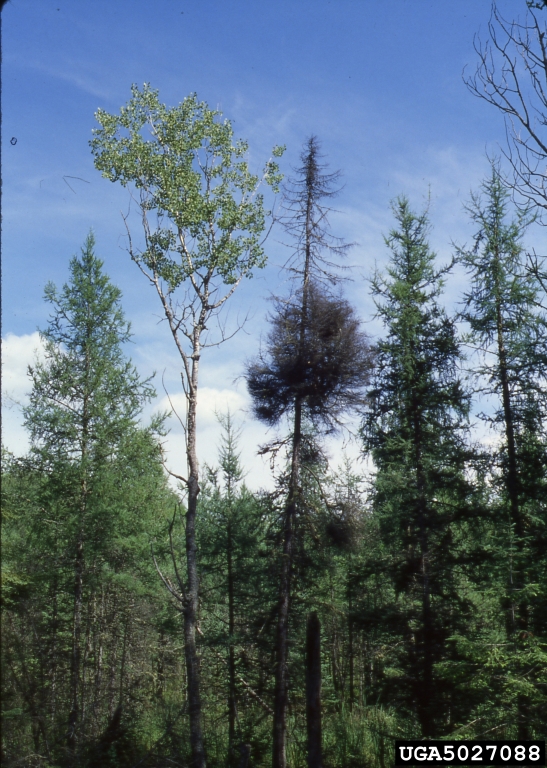Arceuthobium pusillum
Eastern dwarf mistletoe
Nutrition
As mentioned earlier the primary source of nutrients
and water for the Arceuthobium pusillum is by penetrating the bark of its
host and anchoring itself into the wood where its root-like
hyphae connect and penetrate with the host xylem and phloem,
this is done without damaging the host tissue. Through the
xylem to xylem connection the eastern dwarf mistletoe is able to
obtain all the water it needs for its host. In order help
along this flow of water the it transpires at a higher rate than
its host ensuring lower water potentials and keeping the flow
from the host plant steady all year long.
Arceuthobium pusillum is by penetrating the bark of its
host and anchoring itself into the wood where its root-like
hyphae connect and penetrate with the host xylem and phloem,
this is done without damaging the host tissue. Through the
xylem to xylem connection the eastern dwarf mistletoe is able to
obtain all the water it needs for its host. In order help
along this flow of water the it transpires at a higher rate than
its host ensuring lower water potentials and keeping the flow
from the host plant steady all year long.
Now this is where it gets a little weird if it wasn't weird enough, the eastern dwarf mistletoe lack phloem, the capillary like tubes that transport nutrients in most plants. To circumvent this problem of lacking transport vessels the Arceuthobium pusillum through the hyphae that is connected to the host's phloem draws nutrients in and stores these nutrients in the parenchyma. And just like the flow of water from host to parasite, this stream of nutrients is going all year long.
Though the eastern dwarf mistletoe does have chloroplasts, the rate at which it photosynthesizes is dramatically lower than what it needs to survive. This is mainly due to the short scale-like leaves and the miniscule amount of chloroplasts that these plants have. Why then would these so evolved plants hold on to such an archaic characteristic? The reason is that what little photosynthate is produced by the plant can be stored and used as a buffer of nutrients when the host plant is not providing the required nutrients that the eastern dwarf mistletoe needs.